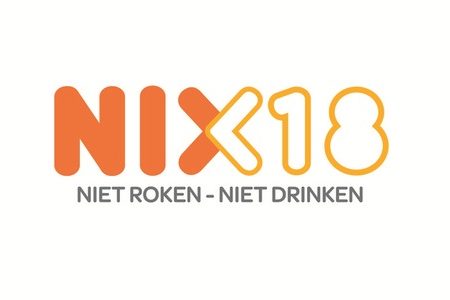Underage drinking: Why raising the minimum legal drinking age does not solve the problem
Over the last couple of years over 700 adolescents have been admitted to hospital due to excessive alcohol use. These 'comazuipers' have sparked debate on underage drinking and brain development. Will the increased legal drinking age solve the problem?
On January 1st the minimum legal drinking age (MLDA) in the Netherlands was raised from 16 to 18. Proponents say that alcohol is so damaging to the adolescent brain that raising the MLDA is necessary to prevent serious health consequences. Alcohol consumption does indeed influence the brain. The short-term effects are often visible after a few drinks: difficulty walking, or slurred speech, for instance. But chronic drinkers may also experience long-term effects, such as memory impairment. In adolescence the brain is still developing and undergoes major changes until about 25 years of age. Due to the changes that occur in the brain during adolescence, it is highly likely that it is especially susceptible to the effects of alcohol in this developmental period.
During development the adolescent brain shows changes in white matter and grey matter. Grey matter is made up of neuronal cell bodies, whereas white matter consists of myelinated axons (i.e. a fatty insulation layer around the axon). More white matter results in better connections between brain areas. Recent research has shown that binge drinking, i.e. drinking more than 4 drinks in one sitting for females or 5 drinks for males, is related to reduced white matter in 18 areas throughout the brain. This means that the connections between brain areas are reduced. Alcohol consumption also has effects on grey matter. In a study it was found that, in rats, acute doses of alcohol resulted in impairment of neurogenesis (birth of new neurons). In humans, alcohol consumption is related to reduced hippocampal volumes in heavy adolescent drinkers, compared to healthy controls. The hippocampus is a brain area crucial for memory functioning. Surprisingly, in this study the two groups did not differ in memory performance.
Although these studies show a connection between brain development and alcohol consumption, they do not reveal the directionality of the effect. It is possible that children who start drinking at a younger age have preexisting differences in brain structure or personality that lead them to start using alcohol earlier. A longitudinal study should be used to investigate alcohol-related changes in the brain or in behavior. In studies of this kind, children are tested on several measures before and after the onset of alcohol use. In one such longitudinal study, participants were tested on two occasions, three years apart. The adolescents who had started drinking heavily in the intervening period showed higher activation in brain areas related to response inhibition compared to those who had remained abstinent. At baseline, however, the participants who subsequently became drinkers had shown lower activation in these regions. These results indicate that preexisting neural differences may be a factor in the onset of substance abuse, and are an indication that heavy drinking during adolescence results in additional alterations in neural activation.
Taken together, the studies discussed show that there is a high probability that excessive amounts of alcohol do have an effect on brain development. In an environment where alcohol is readily available to adolescents, the challenge is to teach them to drink responsibly. Several factors contribute to adolescent drinking, including perceived peer alcohol use, perceived harm of drinking, perceived availability of alcohol, perceived parental disapproval, and of course the individual adolescent’s own attitude towards alcohol. The availability of alcohol is just one of the factors that contributes to adolescent drinking. Therefore the solution to the problem of underage drinking, most likely, does not lie solely in introducing legislation to prohibit adolescents from buying alcohol.
(The numbers on adolescent alcohol abuse are derived from the Dutch Factsheet Alcohol intoxicaties NSCK.)





